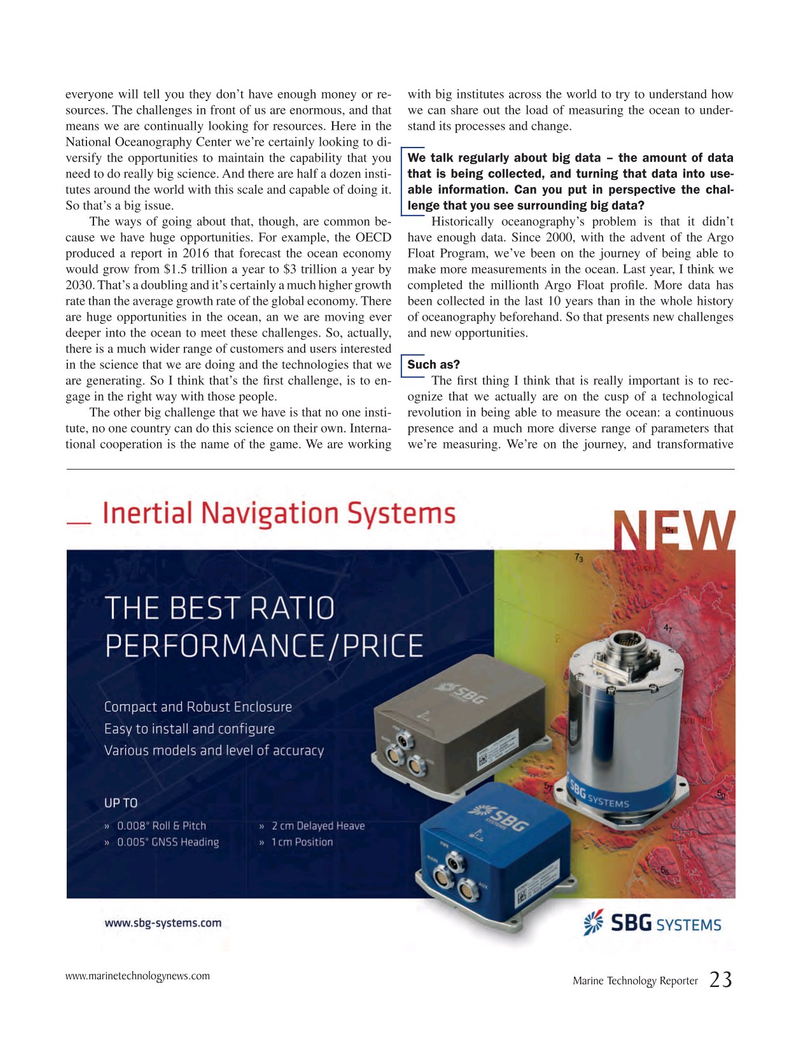
Page 23: of Marine Technology Magazine (June 2017)
Hydrographic Survey
Read this page in Pdf, Flash or Html5 edition of June 2017 Marine Technology Magazine
everyone will tell you they don’t have enough money or re- with big institutes across the world to try to understand how sources. The challenges in front of us are enormous, and that we can share out the load of measuring the ocean to under- means we are continually looking for resources. Here in the stand its processes and change.
National Oceanography Center we’re certainly looking to di- versify the opportunities to maintain the capability that you We talk regularly about big data – the amount of data need to do really big science. And there are half a dozen insti- that is being collected, and turning that data into use- tutes around the world with this scale and capable of doing it. able information. Can you put in perspective the chal-
So that’s a big issue. lenge that you see surrounding big data?
The ways of going about that, though, are common be- Historically oceanography’s problem is that it didn’t cause we have huge opportunities. For example, the OECD have enough data. Since 2000, with the advent of the Argo produced a report in 2016 that forecast the ocean economy Float Program, we’ve been on the journey of being able to would grow from $1.5 trillion a year to $3 trillion a year by make more measurements in the ocean. Last year, I think we 2030. That’s a doubling and it’s certainly a much higher growth completed the millionth Argo Float pro

 22
22

 24
24
